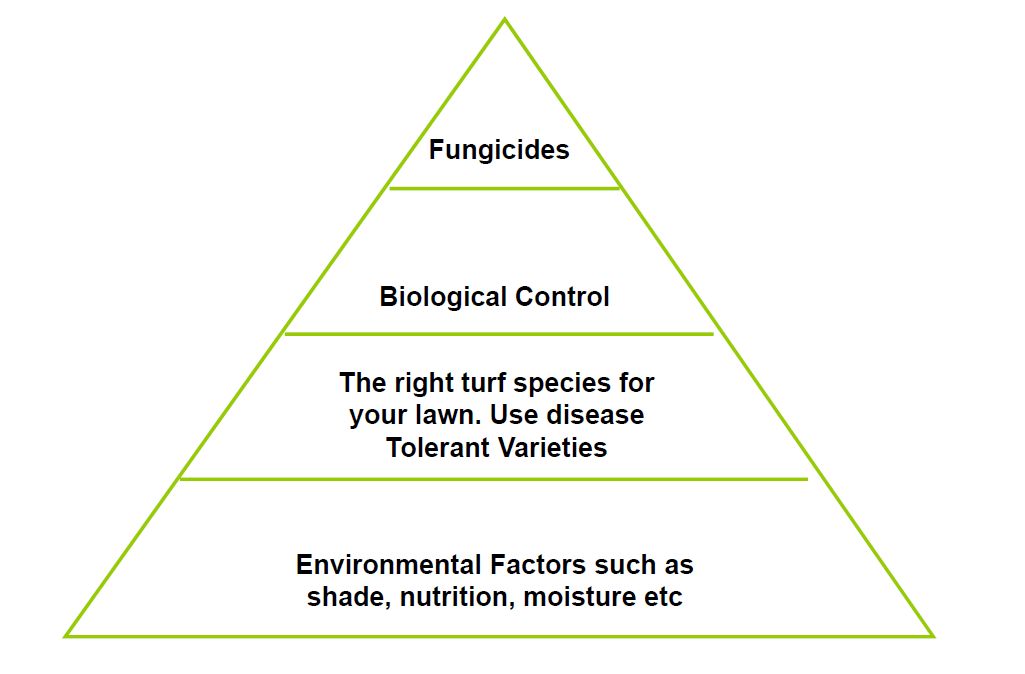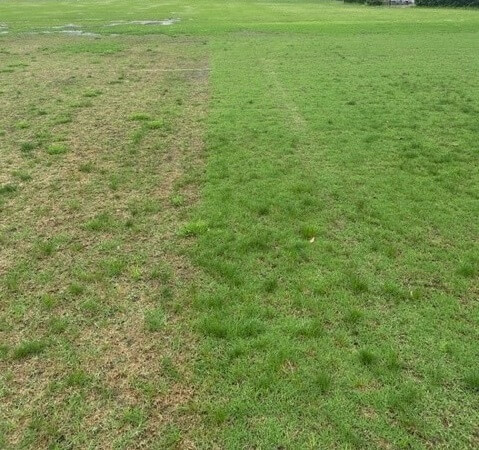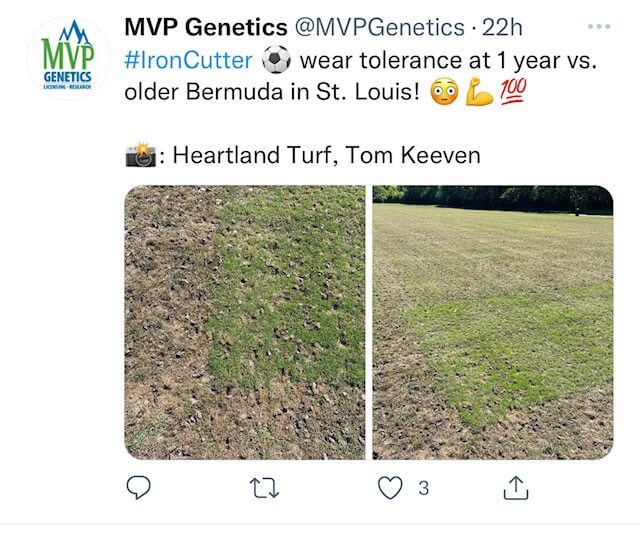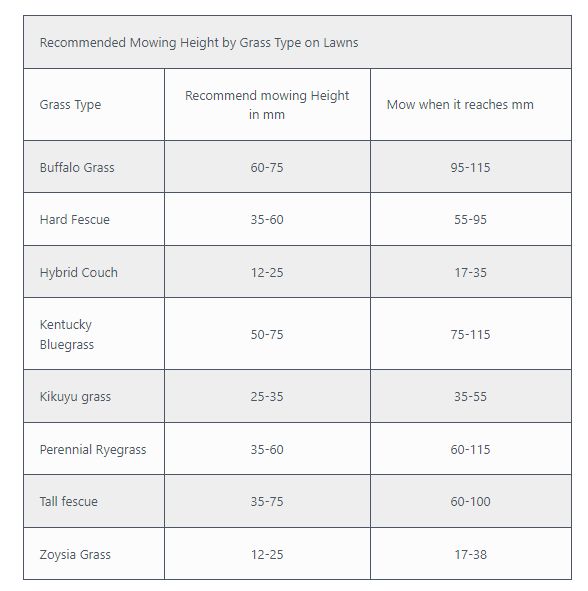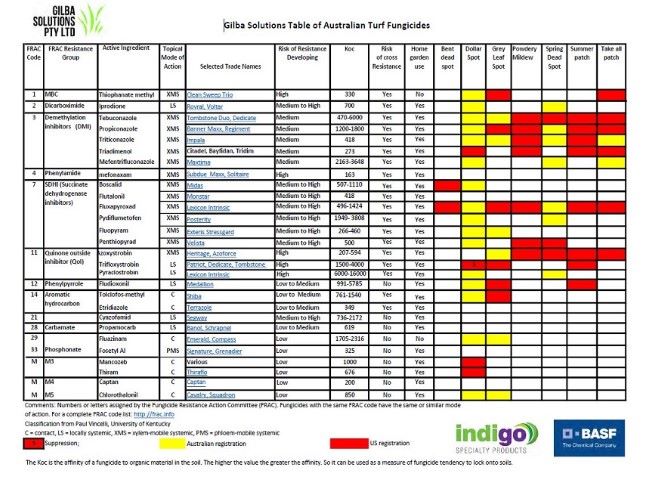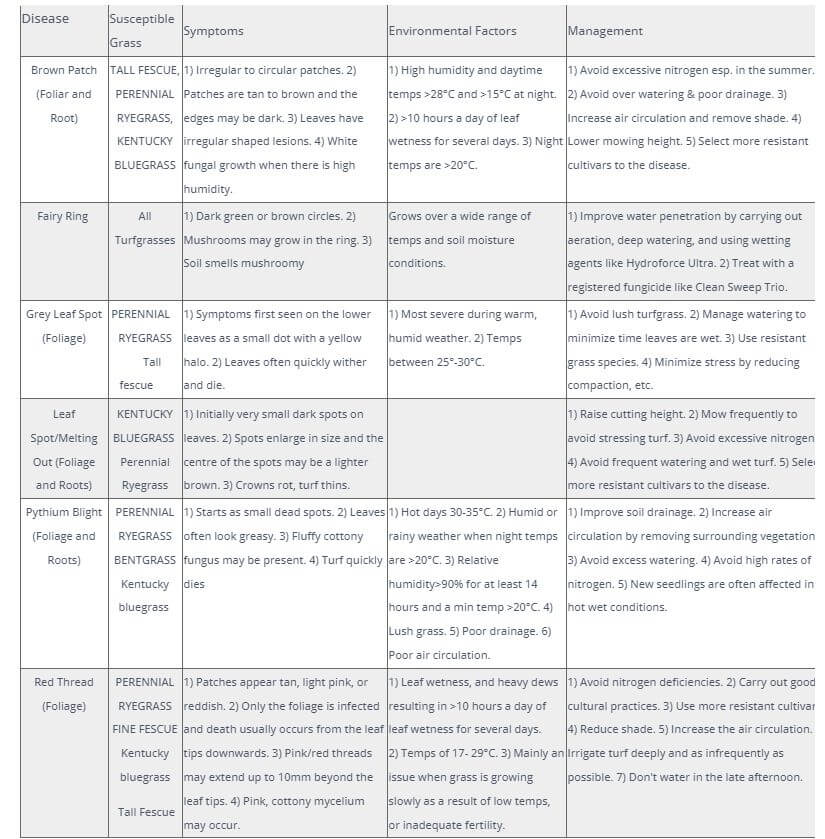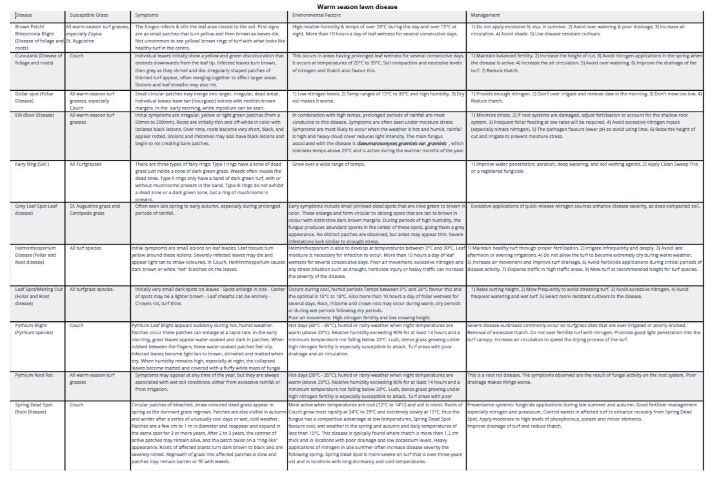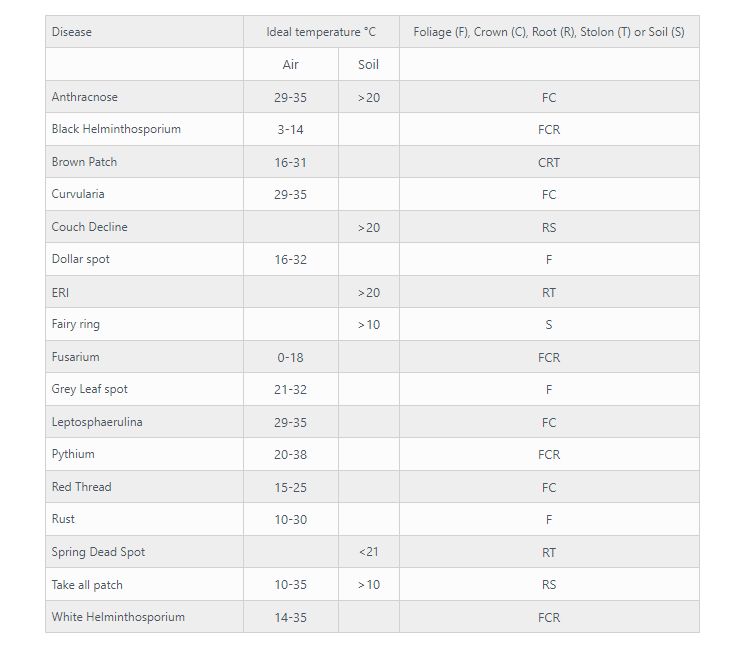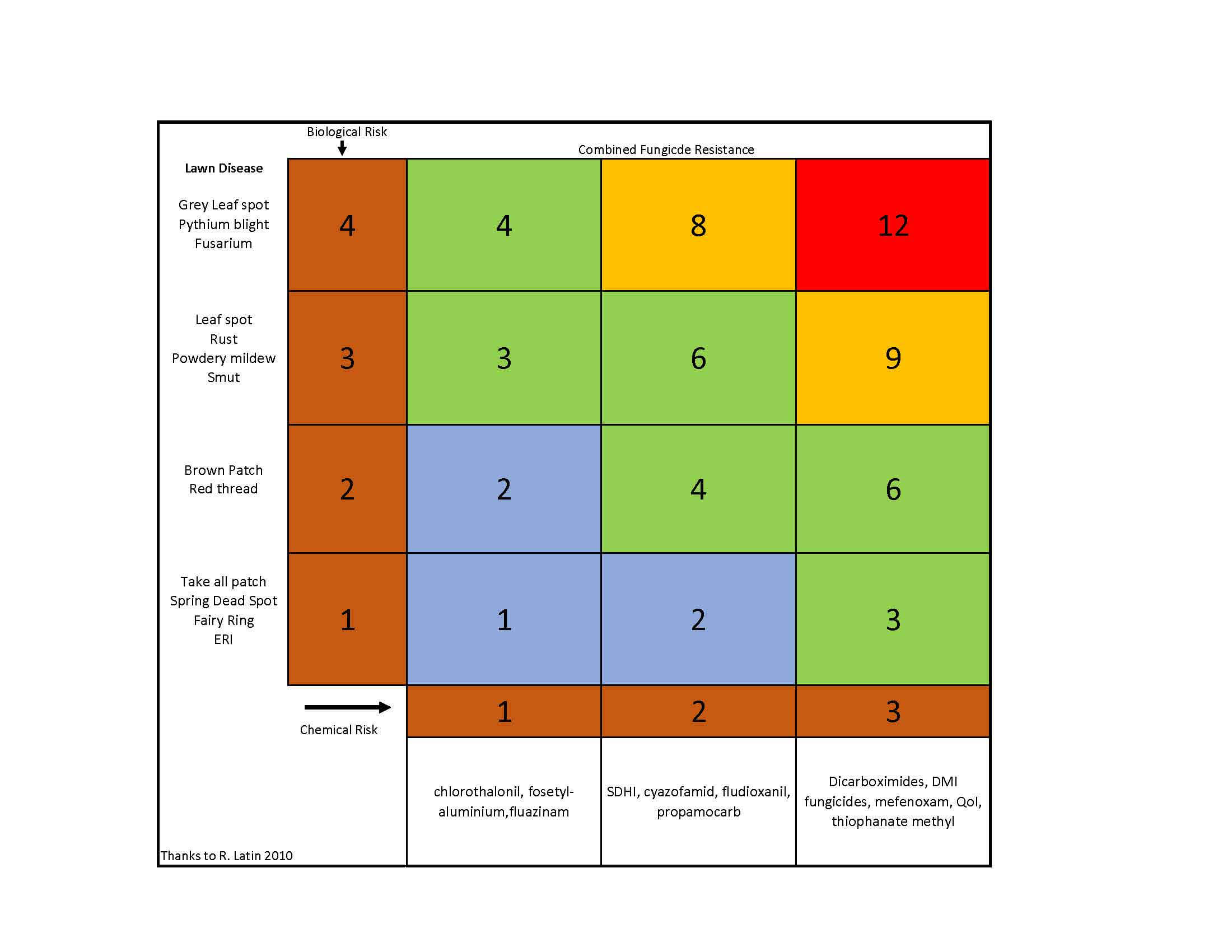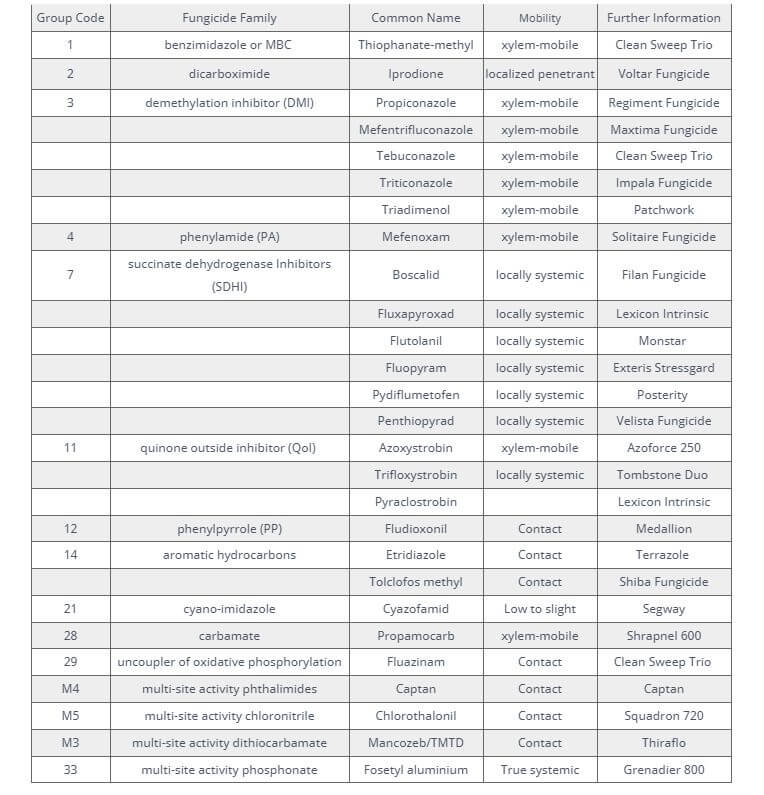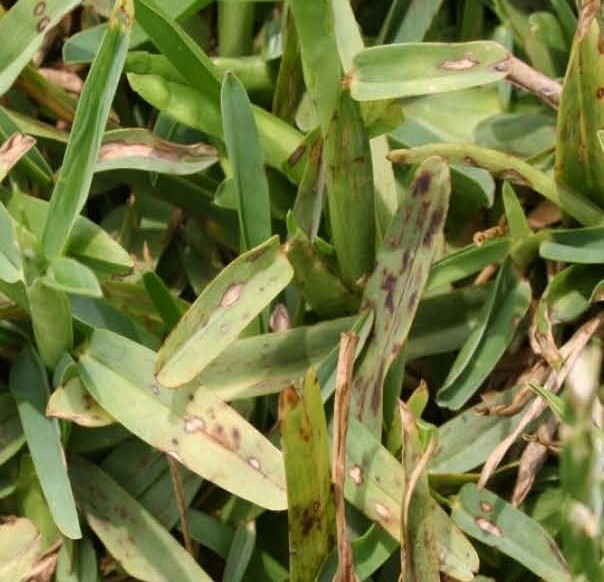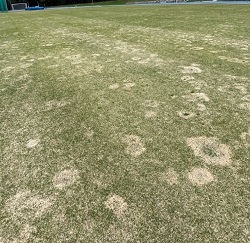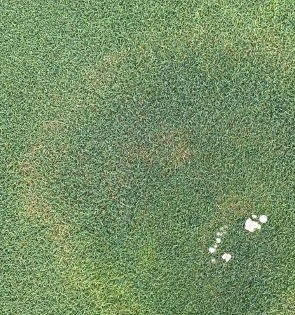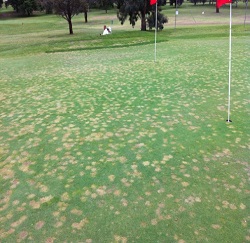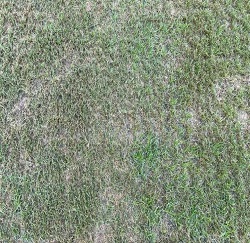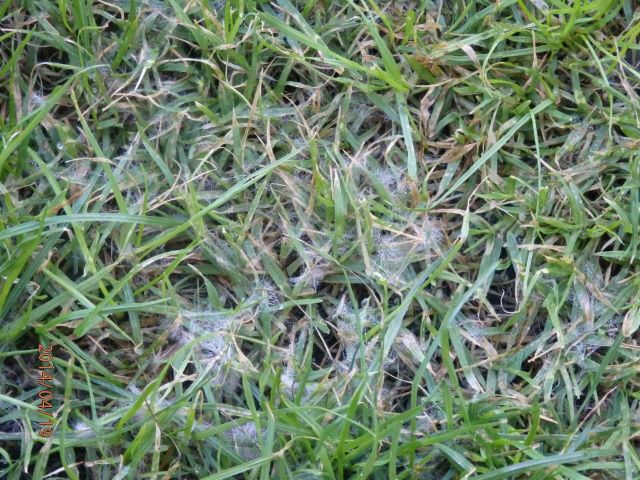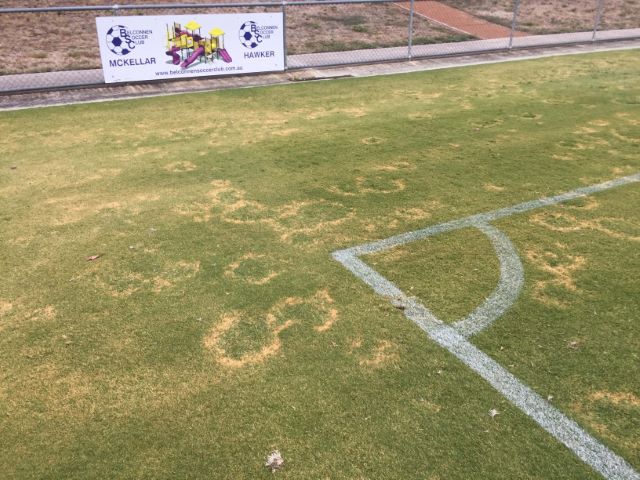Lawn fungicides are substances that prevent, kill, or slow down grass diseases. There are a wide range of available fungicides designed to control turf grass diseases, classed by factors such as their mobility and mode of action. When choosing a fungicide to manage your lawn’s turf diseases, you need to know what disease you are treating, its characteristics, and the positives and negatives of the various types of fungicides.
In order to avoid disease outbreaks happening at all, creating a healthy lawn environment is key to their control. In reality 90% of problems initially diagnosed as disease are usually related to something else. You should look at other problems like poor drainage, mowing height or shade before reaching for the spray bottle. By doing these things you can ensure that you make an informed decision when addressing lawn diseases and get the best results for your lawn.
Integrated Pest Management (IPM)
On so many web forums the two most common questions we see are “what is the disease?” and “what can I spray it with?” We will discuss specific lawn diseases later but before you reach out for a fungicide you should be asking yourself “what’s the problem, what’s caused it and how can I stop it now and from happening again?” That’s where Integrated Pest Management (IPM) comes in.
IPM may not be familiar to some of you but it is something that you should be aware of. It means that you manage your lawn so that conditions don’t favour disease. Fungicide use should be regarded as the last resort and instead aim to use IPM as the foundation of a disease control plan. IPM is a strategy that doesn’t rely entirely on fungicides and takes into consideration factors like thatch. The approach consists of five steps.
- Check the turf for signs of disease, such as discoloured patches or lesions on leaves, stems or roots;
- Set action thresholds;
- Fertilise and water properly;
- Look at the use of biologicals before resorting to fungicides. Our recent article on DIY pest control helps with this.
- and lastly evaluate whether all of the above have worked and what impact they have on the environment.
By following these steps, you can create an effective and sustainable strategy for maintaining your lawn’s health.
Having said all that sometimes you may have to look at using a turf fungicide.
You can use the Lawn Fungicides that the Professionals use
In recent years, there has been an explosion in the number of products on the market for turf professionals and lawn owners. For example there are now combination fungicides on the market like Lexicon Intrinsic and Clean Sweep Trio. These kill any existing disease and stop it coming back. With more products like these on the market, it is now easier than ever to find the right product for your lawn. The Lexicon Intrinsic Label is here.
Are Lawn fungicides Pet safe?
One of the most important things to consider when choosing any product is to make sure they are safe for your family and pets. It is important to read all the labels and instructions carefully before using any product. If you’re not sure, it is always best to consult with a qualified turf consultant or turf agronomist to ensure that you are using the right product correctly
Disease ID.
To get the best results from your lawn fungicide, you must first identify what the turf disease is. Symptoms can include bare patches, spots on leaves, or changes in plant colour. Different diseases effect different turf grasses, and so it’s important to use a fungicide that works on the fungus affecting your lawn. Always read product labels carefully and make sure that the fungicide is OK to use on your type of turf. For more information about common turf diseases, check our free Turf Disease Guide. Always be aware that a healthy lawn is less likely to suffer from disease.
Common Cool Season Lawn Diseases
Common Warm Season Lawn Diseases.
What Lawn Fungicides are available?
There are a number of fungicides available for treating lawn diseases. Each of these will control different types of fungi, and they will vary in how effective they are, their cost, and their safety. You can class fungicides as either contacts or penetrants/systemics.
Contact Lawn fungicides.
Contacts, also known as protectants, act by forming a barrier at the leaf surface, which stops fungus from entering and damaging plant tissue. As they remain outside the plant they are exposed to external factors such as rainfall, and only remain active for 7-14 days. When you use these It is important to fully cover the target as these only will protect the part of the plant that they contact.
Examples of this type of fungicide include ProForce Squadron or ProForce Pistol Fungicide.
Systemic Lawn Fungicides.
True systemic, xylem mobile and translaminar Fungicides.
- True systemic fungicides move up through the xylem, and down through the phloem. Grenadier turf fungicide is a good example of this.
- Xylem-mobile fungicides also known as acropetal fungicides move up through the xylem. Examples of these include BASF Lexicon Intrinsic, ProForce Shrapnel, Azoforce fungicide, Regiment 550, and Solitaire fungicide.
- Fungicides that move from one side of a leaf to the other are ‘translaminar’ or locally systemic and don’t move throughout the plant. An example of this is Segway Fungicide for pythium control in turf.
Combination Lawn fungicides
In recent years combination fungicides have become popular. These offer the benefits of being both contact and systemics and by combining these into one product it means you get the benefit of an immediate result together with long term disease prevention. A good example of this is Clean Sweep Trio.
Biological lawn fungicides
Biologicals are naturally occurring organisms, such as bacteria and fungi, that combat disease. These are generally the safest, but they may be less effective than other types of fungicides. They can also be more expensive and may require more frequent application.
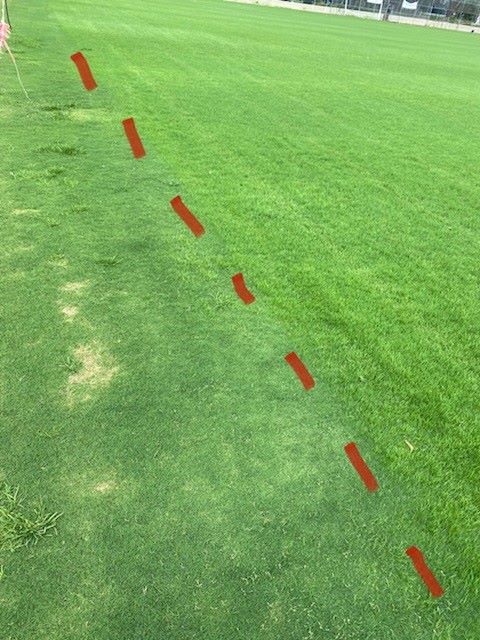
Fungicide cost
Contact fungicides usually don’t cost as much a systemics, but won’t last as long. Although systemic fungicides may be more expensive, they usually last longer. Organic fungicides are usually the safest, but are less effective and need more frequent application.
How Long does a Lawn Fungicide Last?
This depends on a lot of factors but if your using a contact fungicide your looking at 7-14 days; if your using a preventative/systemic fungicide you get much longer control as these last from14-28 days. However, factors such as rainfall/irrigation, and temperature will all effect how long a fungicide lasts.
How to get the best results from a lawn fungicide
Different fungicides require different application methods, so it’s important to make sure you’re applying your product correctly. All the information you need is on the label so read it! If you’re using a spray, for example, make sure you’re using the appropriate nozzle and pressure. It is important to remember that no two lawns are the same. This means you should use the right product for the right situation. With the right products you can ensure that your lawn will look its best and remain healthy for years to come.
Avoiding Resistance.
Overusing fungicies is not only bad for the environment but it will also lead to a reduction in how well they work in the future. Over time fungal pathogens develop resistance to grass fungicides and so it is important to chop and change what are called fungicide chemical groups. The modified 1Latin, R. A Practical Guide to Turfgrass Fungicides, 2011, ISBN: 9780890543924 matrix below will help achieve this. All the other documents throughout this blog also make regular reference to chemical groups. The recent introduction of ProForce Pistol Fungicide is a further option to consider to prevent resistance.
Research into Lawn Fungicides.
Rainfastness of Lawn Fungicides.
- Rainfall effects 2Inguagiato,J.C., K. M. Miele, Influence of simulated rainfall on efficacy of fluazinam, chlorothalonil and iprodione for dollar spot control in creeping bentgrass, Crop Protection, Volume 83, 2016, Pages 48-55, ISSN 0261-2194.chlorothalonil the most, followed by iprodione and then propizonazole with the most rainfast fungicide being boscalid;
- Fluazinam, which is a contact grass fungicide gives better control compared to chlorothalonil or iprodione when it’s going to rain;
- A good general rule is that turf fungicides need 3 to 6 hours without rain after applying;
- It is the amount of rainfall, not the duration that is the problem. For example, 2cm of rain over 1 hour will remove more fungicide than several hours of drizzle;
- During rainy periods, systemic grass fungicides work better than contact fungicides as they are less likely to wash-off;
- Apply protectant fungicides such as chlorothalonil during sunny, dry conditions to allow for quick drying on the leaves.
- Apply systemic fungicides such as SDHI (Lexicon Intrinsic) and strobilurins (AzoForce) under humid, cloudy conditions. The reason for this is that under these conditions the cuticle swells and results in quicker uptake. In dry, hot conditions, the cuticle flattens and less permeable, and so fungicides can wash off the leaf or breakdown in sunlight, heat or due to microbial activity.
Watering and Irrigation.
- Most grass fungicides for crown- and root diseases are not highly mobile in soil.
- A 2018 study3Hutchens, W., J. Kerns, D. Shew, T. Gannon, and K. Ahmed. 2019. Help your fungicide with post-application irrigation. Golfdom. Vol. 75, No. 12, December 2019, p. 42-45. shows that post application watering increases the movement of fungicides in soil. However, even with 25mm of water, tebuconazole doesn’t move further than 125mm into the soil profile. Fungicides for crown- and root diseases work better with post-application irrigation.
- When you target crown and root diseases use a water volume of at least 800L/Ha (8L/100m2) with a soil surfactant. Also irrigate with at least 6mm of water immediately (within 30 minutes) after a grass fungicide application.
Systemic and Contact turf fungicides.
References

Jerry Spencer
Graduated from Newcastle University with an Hons Degree in Soil Science in 1988, Jerry then worked for the Sports Turf Research Institute (STRI) as a turf agronomist before emigrating to Australia in 1993.
He followed this by gaining a Grad Dip in Business Management from UTS. He has worked in a number of management roles for companies as diverse as Samsung Australia, Arthur Yates and Paton Fertilizers.
He has always had a strong affinity with the Australian sports turf industry and as a result he established Gilba Solutions as an independent sports turf consultancy in 1993. Jerry has written over 100 articles and two books on a wide range of topics such as Turf Pesticides and Nutrition which have been published in Australia and overseas.

